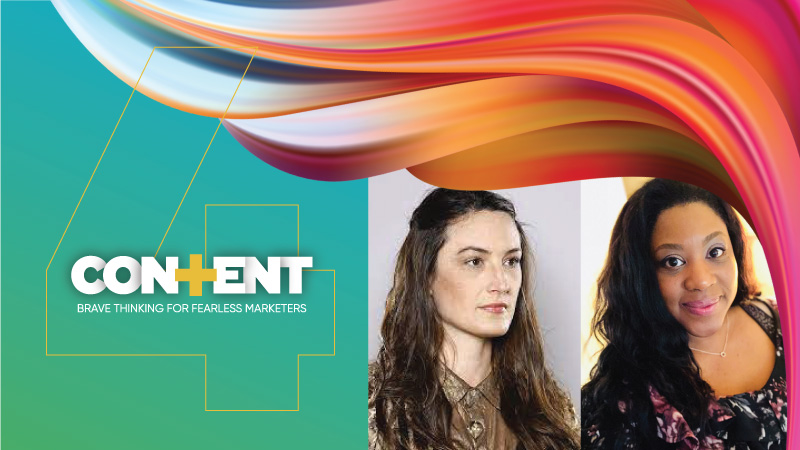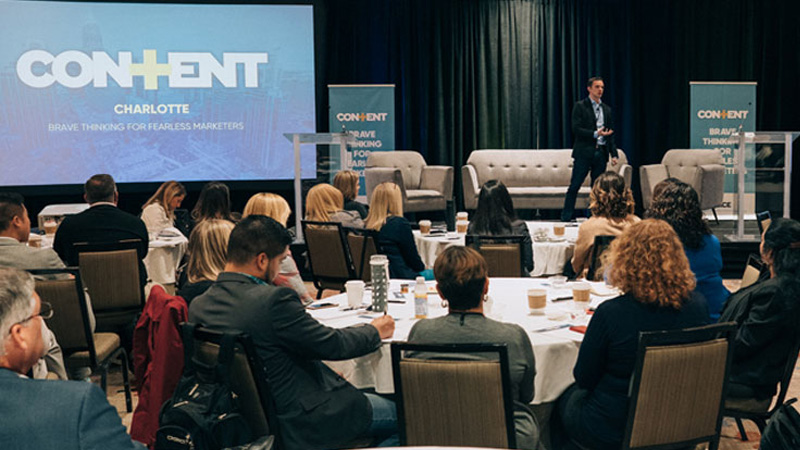Katherine Fairfax Wright, the director, editor and cinematographer of the feature-length documentaries Behind the Curtain: Todrick Hall and Call Me Kuchu, and the producer behind the Netflix drama Imperial Dreams brought Content+ 2021’s theme of “Brave Thinking for Fearless Marketers” to life in her impassioned talk about getting to the heart of the story.
Christie Hailey, creative director at Pace, led a discussion about Wright’s most recent brand work and how she captures authentic stories within brand storytelling. Here are some of my favorite takeaways marketers and brand executives should bravely embrace in future video productions à la Katherine Fairfax Wright.
But first, let’s begin with the docu-style videos she created for McDonald’s.
KEY TAKEAWAY #1:
Be Brave … and Let the Story Be the Hero
When Wright takes on a project like the one above, her job is to “manufacture heart.” But in order to capture hearts, you have to capture people’s humanity, which according to Wright, takes a conscious effort. So, how do you do that? Listening closely to the world around you will help you find great stories. In fact, Wright discussed her own practice of writing down subjects that have captivated her in a running list that she often revisits whenever she embarks on a new project. Based on the project, she selects subjects she thinks will be able to best convey that project’s particular story. The Compton Cowboys and HipletTM dancers were subjects on her active and ever-growing list.
Equally important to capturing hearts is considering what’s going to be impactful to the particular audience or audiences you’re trying to reach. In other words, listening to the “pulse” of the universe at that particular time, as Wright also explained.
Once you zero in on a story, you need to listen to the protagonist to better understand how to “best convey the complexities of their story.” Wright says, “you need to be listening to the nuance of the individual tale you are trying to tell” and this is true for both docu-style and scripted video.
Another key to brand storytelling that manufactures heart and does so authentically is removing product/service/brand placement altogether. Echoing a similar sentiment expressed by Jason Small from Verizon in his talk “The Neuroscience Behind Powerful Storytelling,” Wright urged marketers to step outside of their comfort zones and allow the story to be the hero—not the brand.
Wright expanded on this theme by saying, “I think you could capture an audience to [think] more highly of the [brand], which is the whole point of the endeavor, just as well, if not better, by just presenting [the viewer] with content they like and care about and that tugs at their heartstrings, and you don’t necessarily need any mention of [the product] in order to do that. You just need [the] logo to come in at the end.”
This may seem like too much of an ask for us marketers but here are two examples to support Wright’s thesis. These two competitors’ spots were in market at around the same time. I count eight references to the brand in the first one and only one in the second. Which of the two do you find more memorable?

See? Wright is definitely onto something.
KEY TAKEAWAY #2:
Be Brave … and Let the Filmmaker Lead You to Greatness
Wright reminded us how storytelling is scientific in nature and as a result, the approach to storytelling is constantly in flux. To her, storytelling should be understood “as a truth but only until you come to an even more truthier truth and then you shift your practice that way.” Understanding that change can be difficult, she urged the audience to embrace change, new practices and to “consistently [try] to do things better” because that’s what creates for better storytelling—that constant process of self-improvement.
Wright also encouraged brands and marketers to be “braver with their storytelling not just for the sake of creating good content, as an end in itself, but because good content is how you create something memorable and memories are, what in the end, will sell because they’ll create movement within a person and they’ll activate them.”
That was among the most powerful statements from Wright. Powerful not only for the value it provides but also because it perfectly highlights how at the very core, filmmakers and marketers are perfectly aligned, at least when it comes the purpose of storytelling. This alignment further proves the important ask Wright continuously made throughout her session: listen to the filmmaker.
Filmmakers are passionate and engaged creators who know how to create something distinct that can both bring the brand’s vision and the captivation of the protagonists to life for the audience. Their process, their choices—they’re all part of the package we marketers choose whenever we invite filmmakers to join our projects. And, in the end, we choose the filmmakers that we choose for a reason, and so we have to let that reason shine—obviously within the brand guidelines of course.
In other words, let’s be better about our relationships with filmmakers; let it be more of a partnership with a give and take that allows for all parties to check “a job well done” off at the end of a project.
In Sum: To Create Something Distinct, You Must Put in the Effort and Take the Time … But, Most Importantly, Be Brave
Wright captured my imagination by saying, “The way to make something distinct that’s going to feel distinct and memorable to the viewer is to capture something distinct.” The filmmaker mentioned this while highlighting the adage “From the specific comes the universal,” which is inspired by Irish novelist James Joyce’s renowned quote “In the particular is contained the universal.” And this is so much of what storytelling is all about; find a nuanced moment people will identify with and there will be universality within it.
Finding the right people and telling their stories in the right ways is key to bringing this to life authentically and, so, convincingly too. Wright emphasized her inclination toward working with protagonists who don’t necessarily answer or go after casting calls for this same reason. She also mentioned that working hard to get to know protagonists on a personal level despite time limitations to help break any barriers is also an important part of her process.
Wright stressed that putting in the effort and taking the time to find the right people, locations and elements to bring a particular story (or specific, nuanced moment) to life are critical to creating brand storytelling that’s distinct. And this is what then propels audiences to action, which is “the point of it all.”
In all, if there’s one thing that you should take away from this blog post and from Wright’s session, I would say it is this: Good, authentic and effective brand storytelling is like a chain reaction.
And in order to achieve this chain reaction, we must—most importantly of all—be brave. Be brave in the way we approach brand storytelling and in the way we engage our creative teams.



